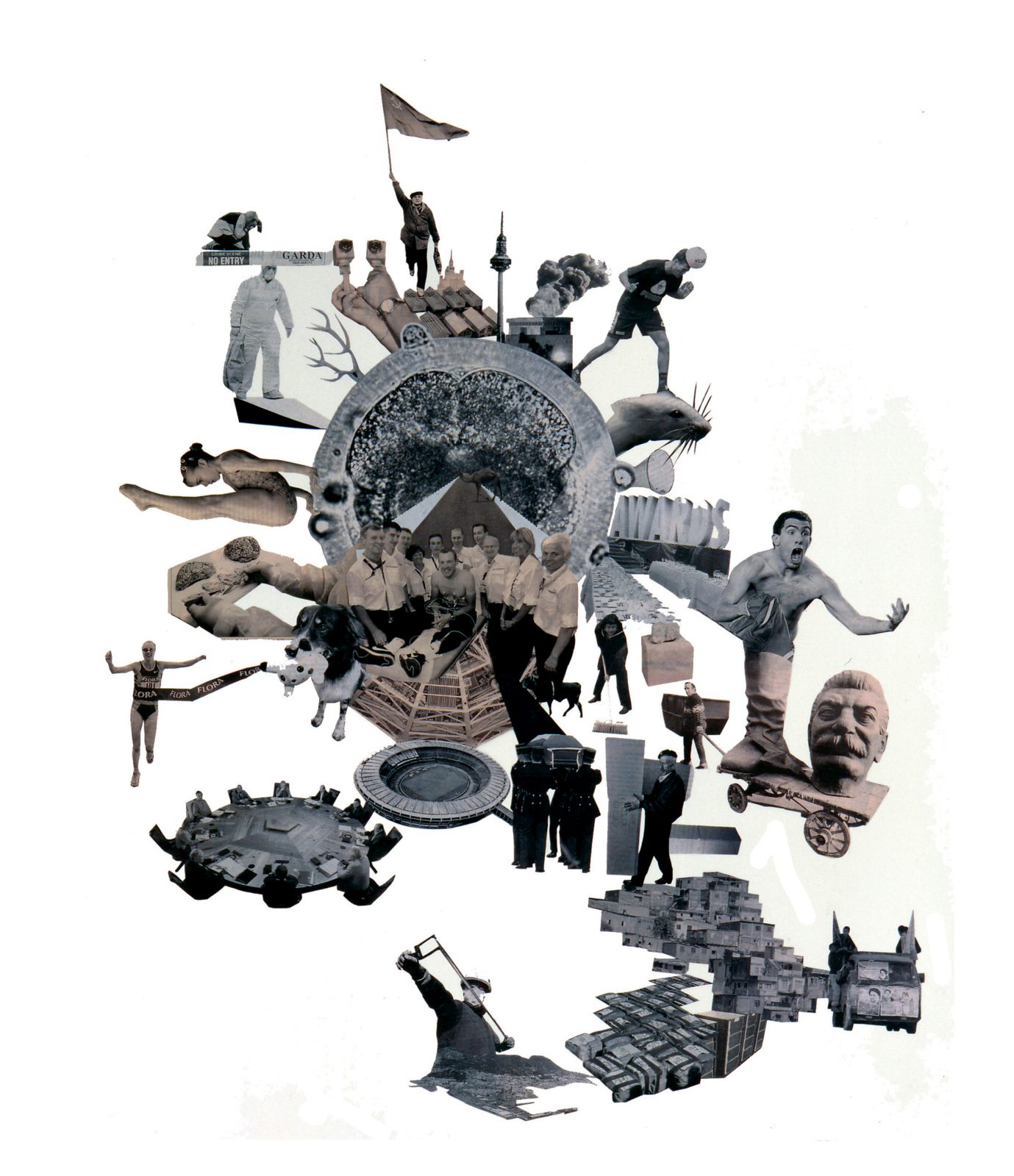Jonathan Hernandez describes his complex and finely-wrought collages as ‘detonations’.
Exploding images from the everyday world into a kaleidoscope of collisions and juxtapositions that are surprising, illuminating and often disconcerting, Hernandez’s assemblages are exquisite works fabricated from found press photographs, collected and re-used by the artist in an ongoing series entitled Rongwrong.
Taking their name from Marcel Duchamp’s journal Rongwrong of 1917 (the magazine was originally to be called Wrongwrong but became Rongwrong as a result of a printing error which appealed to Duchamp’s love of chance happenings), Hernandez’s collages are assembled from an archive of press photographs that the artist has been amassing over a period of time.
[ms-protect-content id=”8224, 8225″]
‘In the beginning I did not have a particular purpose but after some time this exercise [of collecting press photographs] turned into a series of editorial projects (books)… the first one that I accomplished was You are under arrest (2003) and after that Vulnerabilia (2005)…following on from those containers/albums/mosaics I felt the will to work directly with some of the photographic contents of daily newspapers. More or less at the same time, I discovered the engravings of Albert Dürer about the Apocalypse and for a long time I have felt attracted by the collages of Rodchenko … in a way the series Rongwrong evolves from the intertwining of an obsession to produce (and to process afterwards) a personal photographic file of everyday life on the one hand, and that series of engravings by Dürer and a dozen collages by Rodchenko on the other’.
Certain images recur across the different photo-collages in the series – footballers, athletes and sportsmen/women celebrating victory; political leaders, past and present; assorted weaponry and explosions; games; sporting stadia and other distinctive architectural buildings and structures such as pyramids and sphinxes; various means of transportation and of communication. In Rongwrong III (2005), a host of gesturing figures – some triumphant sportsmen; others haranguing politicians – have been re-configured into a surreal family tree at the top of which stands a footballer, spinning a ball like a globe on a single index finger. In Rongwrong VII (2006), an assemblage of victories and disasters are balanced precariously against each other: one photograph leaning against another photograph; one image holding up an adjacent image in a complex network of inter-relationships and dependencies. These collages are not a mirror on the world, reflecting it unambiguously in a literal way. Rather, they are mixed-up and thrown together in incongruous and odd couplings that mask the artist’s labour in creating these subtle detonations and that compel the viewer to find connections and meanings between the disparate elements that make up the collage. For Hernandez, the process of observing, analysing, distilling and editing the world around us lies at the heart of the artistic process that operates at a discrete distance from the ‘scenaries in which we live and circulate.’
With the Rongwrong cycle of collages, Hernandez has fabricated a sequence of kaleidoscopic fictions that hint at the darker side of modernity, progress and globalisation and its banal circularity and inter-dependency, like a domino of actions and reactions that threaten to topple effortlessly one onto the other in a malign chain reaction: ‘I consider reality or realities to have a strong content of fiction to begin with…it is no news that reality can be a great source of fiction…I think this is what happens in the Rongwrong collage series…they are a catalyst of daily events displayed like the genealogical trees of the Apocalypses…the kind of Apocalypses we create every day… this explains why I consider press photographs as the only and exclusive raw materials for these collages. And from here I go back to the beginning: a mirror that detonates itself.’
[/ms-protect-content]
Published in Photoworks issue 8, 2007
Commissioned by Photoworks

